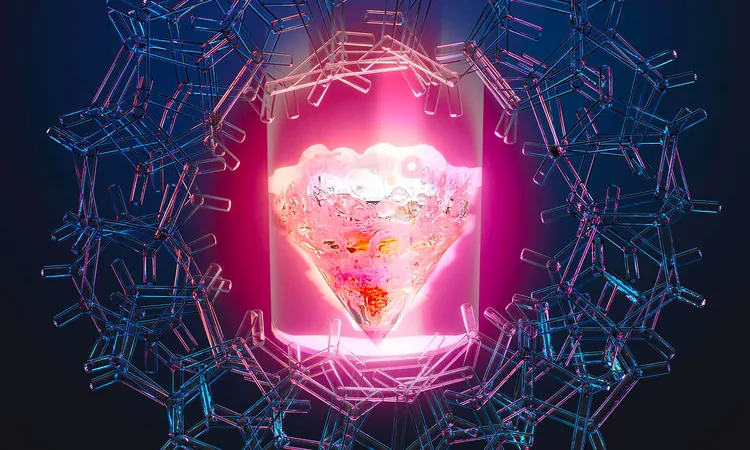
The Violet Element Promethium: A Bright Future for Science and Technology
2025-05-09
Author: Arjun
Unlocking the Secrets of Promethium
In the world of rare earth elements, a shimmering violet glow hints at intriguing possibilities, particularly from the elusive promethium, known as element 61 on the periodic table. This element has long been a mystery, known to exist yet nearly impossible to study due to its dim luminescence and scarcity.
A Missing Piece of Chemistry
Promethium has puzzled chemists for decades, as it was the last of the lanthanide series to be thoroughly examined. While other lanthanides have had their ionic sizes recorded, promethium’s data was notably absent, leaving a significant gap in our understanding of these essential materials.
Rare Earth Elements: Crucial Yet Elusive
Despite their name, rare earth elements are not actually rare; they are crucial for various modern technologies, from smartphones to electric vehicles. Their unique magnetic, phosphorescent, and catalytic properties make them vital to a range of industries, although their extraction and purification processes can be harmful to the environment.
The Vivid Discovery
First discovered in 1945 in wartime reactors, promethium remains one of the rarest elements on Earth. With only a pound present in the Earth's crust, its radioactivity contributes to its elusive nature. To study it, scientists must produce the element themselves, and the only U.S. source is Oak Ridge National Laboratory (ORNL), which generates small amounts of promethium-147.
A Breakthrough in Measurement
Recently, researchers at ORNL developed an innovative diglycolamide ligand that binds with promethium, allowing them to dissolve it safely in water. Using advanced X-ray techniques, they successfully mapped out the hydrated radius of this enigmatic element for the first time, completing a vital puzzle in lanthanide chemistry.
Promethium's Unique Applications
While less flashy than other rare earth elements, promethium has unique properties, particularly its steady beta radiation. Promethium-147 has historically powered devices like heart pacemakers and continues to serve as a light source for spacecraft instruments, demonstrating its potential for future miniaturized energy sources.
Transforming Technology
The latest research findings not only enhance our understanding of promethium but also offer insights into separating rare earth elements more efficiently. Accurate data on ionic sizes can aid chemists in fine-tuning extraction methods, leading to a new wave of innovations in technology.
The Future is Bright
With the new data on promethium’s properties, scientists foresee advancements in various technological frontiers. The collaboration between ORNL’s radiochemists, high-powered computing at the lab, and synchrotron spectroscopy represents a cutting-edge approach to solving challenging scientific problems. This newfound knowledge could lead to breakthroughs in battery technology and medical applications, solidifying the essential role of rare earth elements in advancing modern civilization.
As the violet glow of promethium finally illuminates our understanding of lanthanides, it paves the way for a cleaner, smarter future, showcasing the power of collaboration in science.


 Brasil (PT)
Brasil (PT)
 Canada (EN)
Canada (EN)
 Chile (ES)
Chile (ES)
 Česko (CS)
Česko (CS)
 대한민국 (KO)
대한민국 (KO)
 España (ES)
España (ES)
 France (FR)
France (FR)
 Hong Kong (EN)
Hong Kong (EN)
 Italia (IT)
Italia (IT)
 日本 (JA)
日本 (JA)
 Magyarország (HU)
Magyarország (HU)
 Norge (NO)
Norge (NO)
 Polska (PL)
Polska (PL)
 Schweiz (DE)
Schweiz (DE)
 Singapore (EN)
Singapore (EN)
 Sverige (SV)
Sverige (SV)
 Suomi (FI)
Suomi (FI)
 Türkiye (TR)
Türkiye (TR)
 الإمارات العربية المتحدة (AR)
الإمارات العربية المتحدة (AR)